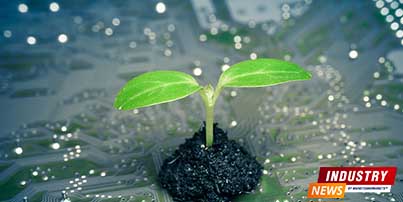Sustainable Clean Energy Megatrend May, June 2023: Mega Bets by Top Companies

This News Covers
- What are some of the major deals in sustainable energy in 2023?
- Which companies have purchased largest carbon credits in history?
- Which companies run on sustainable energy such as nuclear and solar?
- Who announced largest solar power plants or capacity increase in 2023?
- Is nuclear energy efficient? How clean is it?
- What factors drive adoption of solar energy at mega scale worldover?
- How much energy consumption of Microsoft, Google, Apple is clean energy?
- Which are the top countries producing clean energy?
- Country wise government departments supporting clean energy across the world's top countries
- Which companies own largest solar power plants?
- Where are some of the world's largest nuclear energy power plants located?
The global energy landscape is undergoing a significant transformation driven by the increasing adoption of sustainable and clean energy sources. Major players across industries, including technology giants like Microsoft, Google, and Apple, are making substantial investments in renewable energy to power their operations. Companies like Microsoft have made commitments to achieve 100% renewable energy consumption, while others are significantly expanding their clean energy capacity. Additionally, countries such as China, the United States, and Germany are leading the way in clean energy production, driving the shift towards a more sustainable future. These developments reflect a growing emphasis on reducing carbon emissions and mitigating the impacts of climate change through renewable energy adoption.
MarketsandMarkets welcomes this development and our editors share their views.
What are some of the major deals in sustainable energy in 2023?
Microsoft has agreed to purchase 50 megawatts of electricity from Helion Energy's fusion power plant, which is expected to come online by 2028. Apart from this, there are 3-4 more noteworthy developments that are very interesting harbingers for sustainable and clean energy production.
Fusion Energy
Fusion energy is considered a potentially limitless and emissions-free source of power.
Helion Energy, a startup, has been working on fusion energy technology and has achieved significant milestones in terms of energy output and operational temperature. Their approach involves injecting deuterium and helium-3 gas into a machine, heating it to form charged plasma, accelerating and compressing the plasma until it collides to create a fusion reaction.
The deal with Microsoft is crucial for Helion Energy's progress as it provides support from an experienced power plant builder (Constellation) and aligns with Microsoft's goal of matching 100% of its electricity consumption with zero-carbon purchases by 2030. Financial penalties are in place if Helion Energy fails to deliver the agreed-upon electricity to Microsoft.
Additionally, it's worth noting that Helion Energy raised $500 million in a fundraising round led by Sam Altman, CEO of OpenAI and Helion's largest investor. This particular deal exemplifies the growing interest and investments in clean and sustainable energy, with fusion technology being considered a potentially transformative energy source.
Which companies have purchased largest carbon credits in history?
The purchase of these carbon credits by Aramco and other companies indicates their participation in voluntary carbon markets and their commitment to decarbonization efforts. While the voluntary carbon credit market has faced criticism, it continues to grow as more companies recognize the importance of offsetting their emissions and supporting climate action.
- Oil and gas giant Saudi Arabian Oil Co. (Aramco), along with other Saudi and international firms, purchased over 2.42 million tons of carbon credits at the Regional Voluntary Carbon Market Company (RVCMC) auction held in Nairobi, Kenya.
- The auction set a new record for the largest-ever voluntary carbon credits sold, surpassing the previous record of 1.54 million tons (1.4 million metric tons) in October 2022.
- Aramco, Saudi Electricity Company (SEC), and NEOM subsidiary ENOWA purchased the largest number of carbon credits in the auction.
- The auction clearing price was $6.27 (SAR 23.50) per metric ton of carbon credits.
- The carbon credits offered in the auction were "high-quality CORSIA-eligible and Verra-registered carbon credits," suitable for buyers across various industries to support global transition efforts.
- The credits originated from 18 projects encompassing a mix of carbon dioxide avoidance and removal, including clean cookstoves and renewable energy projects.
- Three-quarters of the carbon credits originated from countries in the Middle East, North Africa, and Sub-Saharan Africa, such as Kenya, Uganda, Burundi, Rwanda, Morocco, Egypt, and South Africa.
- The RVCMC, founded by Saudi Arabia's Public Investment Fund and the Saudi Tadawul Group, aims to develop the voluntary carbon market, support climate mitigation projects, establish a carbon credit trading exchange, and provide advisory services for organizations seeking to decarbonize.
Which companies run on sustainable energy such as nuclear and solar?
- Google: Google has been a leader in renewable energy adoption. The company has committed to running its global operations on 100% renewable energy and has made substantial investments in both solar and wind energy projects.
- Apple: Apple is committed to powering its operations and data centers with renewable energy. The company has invested in solar and wind energy projects and has set a goal to achieve a net-zero carbon footprint for its supply chain by 2030.
- Amazon: Amazon has made significant strides in renewable energy adoption. The company has a commitment to power its operations with 100% renewable energy and has invested in large-scale wind and solar projects to achieve this goal.
- Tesla: Tesla, an electric vehicle manufacturer, not only produces electric cars but also manufactures energy storage solutions and solar panels through its subsidiary, SolarCity. The company aims to accelerate the transition to sustainable energy with its products.
- Ørsted: Ørsted, a Danish energy company, is a global leader in offshore wind energy. The company has been investing heavily in renewable energy projects and aims to be carbon-neutral by 2025.
- Enel: Enel, an Italian multinational energy company, has made significant investments in renewable energy, particularly in wind and solar power. The company has a commitment to achieve 55% of its generation capacity from renewables.
- NextEra Energy: NextEra Energy is one of the largest renewable energy companies in the world. It operates renewable energy projects, including wind and solar farms, and has a significant presence in the United States.
Who announced largest solar power plants or capacity increase in 2023?
In 2023, Canadian Solar announced the largest solar power plant capacity increase through its plan to start a 5-GW solar panel assembly facility in Mesquite, Texas. This facility will be Canadian Solar's first solar panel factory in the United States and is expected to become the largest crystalline silicon solar panel factory in the country. The company plans to invest $250 million into the Texas factory, creating approximately 1,500 jobs. Production is set to begin by the end of 2023. Canadian Solar aims to use its advanced TOPCon solar technology in the factory, with TOPCon modules likely targeting the commercial and utility-scale solar markets. This investment reflects Canadian Solar's strategic commitment to a sustainable and resilient clean energy supply chain in the United States.
Is nuclear energy efficient? How clean is it?
Nuclear energy is generally considered to be a highly efficient form of energy production. Nuclear power plants can generate a large amount of electricity from a relatively small amount of fuel compared to other forms of energy generation, such as fossil fuels.
In terms of environmental impact, nuclear energy is considered a low-carbon energy source. Nuclear power plants do not produce direct greenhouse gas emissions during their operation. However, it is important to note that there are emissions associated with the entire lifecycle of nuclear energy, including the mining, processing, and disposal of nuclear fuel, as well as the construction and decommissioning of nuclear power plants.
Nuclear energy production does present some challenges and concerns. The primary issue is the management and disposal of radioactive waste, which can remain hazardous for a long period of time. Stringent safety measures are necessary to prevent accidents and mitigate risks associated with nuclear power plants. While severe accidents are rare, such as the Chernobyl and Fukushima disasters, they have highlighted the potential risks involved with nuclear energy.
The efficiency and cleanliness of nuclear energy need to be evaluated in the context of other available energy options and considering various factors, including safety, waste management, cost, and public acceptance. Different countries and regions have different policies and perspectives regarding nuclear energy, with some embracing it as a key part of their energy mix, while others are phasing it out in favor of renewable energy sources.
It's worth noting that advancements in nuclear technology, such as the development of small modular reactors (SMRs) and next-generation reactors, are being pursued to address some of the concerns associated with traditional nuclear power plants. These advanced designs aim to enhance safety, reduce waste, and improve efficiency in the nuclear energy sector.
What factors drive adoption of solar energy at mega scale worldover?
Continuous technological advancements and favorable market conditions, are driving the rapid adoption of solar energy at a mega scale worldwide. The combination of cost competitiveness, policy support, environmental considerations, energy security, technology improvements, economic benefits, and public demand is propelling solar energy to the forefront of the global energy transition.
Several key factors drive the adoption of solar energy at a mega scale worldwide. These factors include:
- Declining Costs: The cost of solar photovoltaic (PV) systems has significantly decreased over the years, making solar energy more economically competitive with conventional energy sources. Technological advancements, increased manufacturing efficiency, and economies of scale have contributed to cost reductions, making solar energy an attractive option for large-scale deployment.
- Government Policies and Incentives: Many governments have implemented supportive policies and financial incentives to encourage the adoption of solar energy. These include feed-in tariffs, tax credits, grants, renewable energy targets, and favorable regulatory frameworks. Government support provides stability, encourages investment, and accelerates the growth of solar power installations.
- Environmental Concerns and Climate Goals: The increasing awareness of climate change and the need to reduce greenhouse gas emissions have propelled the adoption of solar energy. Solar power is a clean and renewable energy source that helps reduce carbon emissions and air pollution associated with conventional energy generation. Countries and regions committed to environmental sustainability and climate goals prioritize solar energy as a significant part of their energy transition strategies.
- Energy Security and Independence: Solar energy offers greater energy security and independence by diversifying the energy mix and reducing reliance on fossil fuel imports. Countries with limited fossil fuel resources or vulnerable to supply disruptions find solar energy attractive for meeting their energy needs and reducing dependence on external sources.
- Technological Advancements: Advances in solar technology have significantly improved the efficiency, performance, and reliability of solar PV systems. Innovations in solar cell technologies, energy storage solutions, and system integration have expanded the possibilities for large-scale solar deployment. These technological advancements have made solar energy more reliable, cost-effective, and suitable for utility-scale projects.
- Job Creation and Economic Benefits: The solar energy sector has emerged as a major source of job creation and economic growth. The installation, operation, and maintenance of large-scale solar projects require a skilled workforce, contributing to job opportunities and local economic development. Solar energy projects often bring investments, revenue generation, and increased economic activity to the regions where they are implemented.
- Public Awareness and Demand: Growing public awareness of environmental issues and the benefits of renewable energy has created a demand for solar energy. Consumers, communities, and businesses increasingly prioritize clean energy sources and support the transition to sustainable power. This demand drives the adoption of solar energy at a mega scale as businesses and governments respond to the expectations of environmentally conscious stakeholders.
How much energy consumption of Microsoft, Google, Apple is clean energy?
- Microsoft: Microsoft has made significant commitments to clean energy and has been working towards powering its operations with renewable energy. Microsoft announced that it had achieved its goal of powering its global operations with 100% renewable energy. The company has been investing in renewable energy projects and has a long-term commitment to carbon neutrality and reducing its carbon footprint.
- Google: Google has been a leader in renewable energy adoption and has made substantial progress in powering its operations with clean energy. Google announced that it has been operating on 100% renewable energy for its global operations, including data centers and offices. The company has made substantial investments in renewable energy projects worldwide and continues to prioritize clean energy procurement.
- Apple: Apple has been actively transitioning to clean energy sources and has made significant strides in powering its operations with renewable energy. Apple announced that its global operations, including data centers, offices, and retail stores, are powered with 100% renewable energy. The company has invested in renewable energy projects, including solar and wind, to achieve its clean energy goals.
Which are the top countries producing clean energy?
These countries represent a sample of the top clean energy producers globally, but there are several other nations making significant strides in clean energy production and adoption.
- China: China has been the largest producer of clean energy in recent years. The country has made significant investments in renewable energy sources, particularly in solar and wind power. China has a robust renewable energy industry and has been actively expanding its clean energy capacity.
- United States: The United States is one of the largest producers of clean energy globally. The country has a diverse clean energy sector, including solar, wind, hydroelectric, and geothermal power. Different states within the U.S. have varying levels of clean energy production, with some leading in specific renewable sources.
- Germany: Germany is a pioneer in clean energy production, particularly in solar and wind power. The country has been a global leader in renewable energy adoption, driven by supportive government policies and incentives. Germany has made significant progress in transitioning to a clean energy system.
- India: India has been rapidly expanding its clean energy production, driven by ambitious renewable energy targets and favorable policies. The country has a strong focus on solar power, and its capacity for solar energy generation has increased significantly in recent years. India is also investing in wind power and other renewable sources.
- Japan: Japan is a leading country in clean energy production, particularly in solar power. The country has implemented supportive policies and incentives to promote renewable energy adoption, following the Fukushima nuclear disaster. Japan has been investing in solar energy projects and has a significant capacity for solar power generation.
- Brazil: Brazil has a substantial portion of its energy mix coming from clean sources, primarily hydropower. The country has a significant capacity for hydroelectric power generation, making it a major producer of clean energy. Brazil has also been investing in other renewable sources, including wind and solar power.
- Canada: Canada has vast renewable energy resources and is a significant producer of clean energy. The country has a diverse mix of clean energy sources, including hydroelectric power, wind power, and solar power. Canada has been steadily increasing its clean energy capacity and has a strong commitment to sustainable energy production.
Country wise government departments supporting clean energy across the world’s top countries
China:
- Installed Clean Energy Capacity: Installed Clean Energy Capacity: China has the highest installed clean energy capacity globally, totalling 2,564.05 GW, including both renewable and nuclear energy sources.
- Government Department: National Energy Administration (NEA) is responsible for clean energy policies.
- Sources of Clean Energy: China's clean energy mix includes hydroelectric power, wind power, solar power, and nuclear power.
United States:
- Installed Clean Energy Capacity: The United States has a significant installed capacity of clean energy, accounting for 20% and including sources such as solar, wind, hydroelectric, and nuclear power.
- Government Department: The Department of Energy (DOE) plays a key role in framing clean energy policies.
- Sources of Clean Energy: The U.S. clean energy mix includes wind power, solar power, hydroelectric power, and nuclear power.
Germany:
- Installed Clean Energy Capacity: Germany has a notable installed capacity of 66.5 GW of clean energy, with a strong focus on solar and wind power.
- Government Department: The Federal Ministry for Economic Affairs and Energy (BMWi) oversees clean energy policies.
- Sources of Clean Energy: Germany's clean energy sources include solar power, wind power, biomass, and hydropower.
India:
- Installed Clean Energy Capacity: India has been rapidly expanding its clean energy capacity to 122 gigawatts, with a focus on solar and wind power.
- Government Department: The Ministry of New and Renewable Energy (MNRE) is responsible for clean energy policies.
- Sources of Clean Energy: India's clean energy mix comprises solar power, wind power, biomass, and hydropower.
Japan
- Installed Clean Energy Capacity: Japan has a significant installed capacity of 357.8 GW of clean energy, with a focus on solar power.
- Government Department: The Ministry of Economy, Trade, and Industry (METI) oversees clean energy policies.
- Sources of Clean Energy: Japan's clean energy sources primarily include solar power, wind power, and hydroelectric power.
Brazil:
- Installed Clean Energy Capacity: Brazil has a substantial clean energy capacity of 181.6 GW, largely driven by its hydroelectric power installations.
- Government Department: The Ministry of Mines and Energy (MME) is responsible for clean energy policies.
- Sources of Clean Energy: Brazil's primary source of clean energy is hydroelectric power, with significant contributions from wind power and biomass.
Canada:
- Installed Clean Energy Capacity: Canada has a diverse mix of clean energy sources, totaling 149 GW, including hydroelectric, wind, solar, and biomass power.
- Government Department: Natural Resources Canada (NRCan) plays a role in shaping clean energy policies.
- Sources of Clean Energy: Canada's clean energy mix includes hydroelectric power, wind power, solar power, and biomass.
France:
- Installed Clean Energy Capacity: France has a significant clean energy capacity of 136.2 GW, primarily driven by its nuclear power installations.
- Government Department: The Ministry for Ecological Transition oversees clean energy policies.
- Sources of Clean Energy: France's main source of clean energy is nuclear power, with contributions from hydropower and wind power.
Italy:
- Installed Clean Energy Capacity: Italy has a notable installed capacity of 59.9 GW of clean energy, with a focus on solar and wind power.
- Government Department: The Ministry of Economic Development is involved in shaping clean energy policies.
- Sources of Clean Energy: Italy's clean energy mix includes solar power, wind power, biomass, and hydroelectric power.
Spain:
- Installed Clean Energy Capacity: Italy has a notable installed capacity of 59.9 GW of clean energy, including solar.
Which companies own largest solar power plants?
Tengger Desert Solar Park (China)
- Owner: China National Energy Administration (NEA)
- Location: Tengger Desert, Inner Mongolia
- Capacity: 1,547 MW
Bhadla Solar Park (India)
- Owner: Solar Energy Corporation of India (SECI)
- Location: Bhadla, Rajasthan
- Capacity: 2,245 MW
Kurnool Ultra Mega Solar Park (India)
- Owner: Andhra Pradesh Solar Power Corporation Private Limited (APSPCL)
- Location: Kurnool, Andhra Pradesh
- Capacity: 1,000 MW
Noor Abu Dhabi Solar Plant (United Arab Emirates)
- Owner: Abu Dhabi National Energy Company (TAQA) and Abu Dhabi Water and Electricity Authority (ADWEA)
- Location: Sweihan, Abu Dhabi
- Capacity: 1,177 MW
Kamuthi Solar Power Project (India)
- Owner: Adani Green Energy
- Location: Kamuthi, Tamil Nadu
- Capacity: 648 MW
Longyangxia Dam Solar Park (China)
- Owner: State Power Investment Corporation (SPIC)
- Location: Gonghe County, Qinghai Province
- Capacity: 850 MW
Pavagada Solar Park (India)
- Owner: Karnataka Solar Power Development Corporation Limited (KSPDCL)
- Location: Pavagada, Karnataka
- Capacity: 2,050 MW
Solar Star (United States)
- Owner: SunPower and MidAmerican Solar
- Location: Rosamond, California
- Capacity: 579 MW
Villanueva Solar Power Plant (Mexico)
- Owner: Enel Green Power
- Location: Coahuila and Viesca, Mexico
- Capacity: 828 MW
Pavagada Solar Park (India)
- Owner: NTPC Limited
- Location: Pavagada, Karnataka
- Capacity: 2,000 MW
Where are some of the world's largest nuclear energy power plants located?
Kashiwazaki-Kariwa Nuclear Power Plant (Japan)
- Company: Tokyo Electric Power Company Holdings (TEPCO)
- Installed Capacity: 7,965 MW
- Start Year: 1985-1997 (multiple units)
- Duration Left: Operating with no specified closure date
- Mechanism: Boiling Water Reactor (BWR)
Bruce Nuclear Generating Station (Canada)
- Company: Bruce Power
- Installed Capacity: 6,384 MW
- Start Year: 1977-1987 (multiple units)
- Duration Left: Operating with license extensions until 2064
- Mechanism: Pressurized Heavy Water Reactor (PHWR)
Zaporizhzhia Nuclear Power Plant (Ukraine)
- Company: Energoatom
- Installed Capacity: 5,700 MW
- Start Year: 1985-1995 (multiple units)
- Duration Left: Operating with no specified closure date
- Mechanism: VVER-1000 Pressurized Water Reactor (PWR)
Yonggwang Nuclear Power Plant (South Korea)
- Company: Energoatom
- Installed Capacity: 5,700 MW
- Start Year: 1985-1995 (multiple units)
- Duration Left: Operating with no specified closure date
- Mechanism: VVER-1000 Pressurized Water Reactor (PWR)
Hanul Nuclear Power Plant (South Korea)
- Company: Korea Hydro & Nuclear Power
- Installed Capacity: 5,929 MW
- Start Year: 1988-1996 (multiple units)
- Duration Left: Operating with license extensions until 2030s
- Mechanism: Pressurized Water Reactor (PWR)
Kudankulam Nuclear Power Plant (India)
- Company: Nuclear Power Corporation of India Limited (NPCIL)
- Installed Capacity: 2,000 MW (currently operating with two units)
- Start Year: 2013 (Unit 1), 2016 (Unit 2)
- Duration Left: Operating with plans for additional units
- Mechanism: VVER-1000 Pressurized Water Reactor (PWR)
Vogtle Electric Generating Plant (United States)
- Company: Georgia Power, Oglethorpe Power, MEAG Power, Dalton Utilities
- Installed Capacity: 2,430 MW (currently operating with two units)
- Start Year: 1987 (Unit 1), 1989 (Unit 2)
- Duration Left: Operating with plans for additional units
- Mechanism: Pressurized Water Reactor (PWR)
References
GET AHEAD
Top Research Reports to Fuel Your Industry KnowledgeEditor's Pick


Information and Communication Technology
Insurtech Funding News - Coverdash raises USD 13.5 Million
PODCASTS

Sustainable Digital Transformation & Industry 4.0
Sanjay Kaul, President-Asia Pacific & Japan, Cisco, and host Aashish Mehra, Chief Research Officer, MarketsandMarkets, in conversation on unraveling 'Sustainable Digital Transformation and Industry 4.0'
11 July 2023|S2E12|Listen Now

Generative AI
Prasad Joshi, Senior Vice President-Emerging Technology Solutions, Infosys, and host, Vinod Chikkareddy, CCO, MarketsandMarkets, in exploring the recent advances in AI and the generative AI space.
7 Nov 2023|S2E13|Listen Now
Geothermal Energy Market
Download Whitepaper
The purchase of these carbon credits by Aramco and other companies indicates their participation in voluntary carbon markets.
Microsoft has agreed to purchase 50 megawatts of electricity from Helion Energy's fusion power plant, which is expected to come online by 2028.












